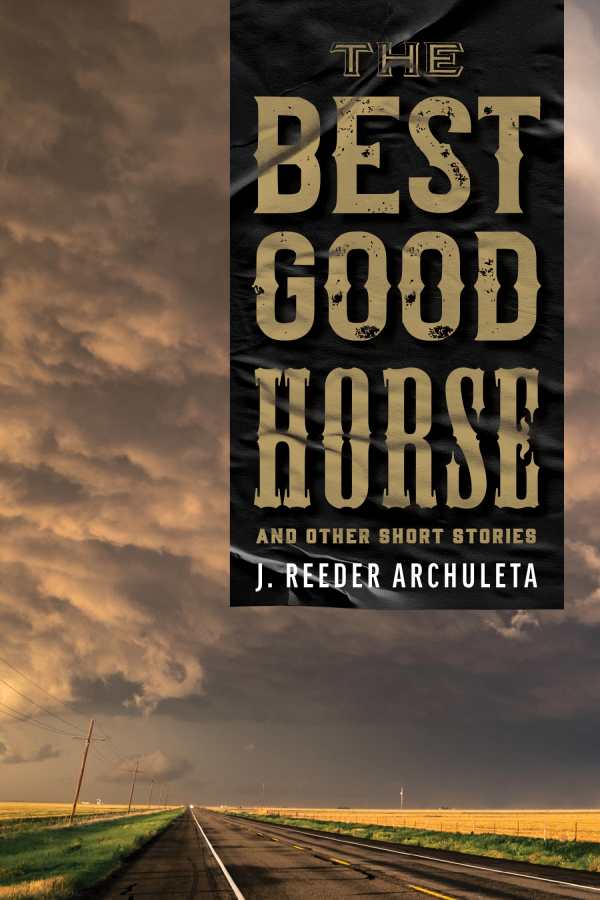The Best Good Horse
And Other Short Stories
The Best Good Horse is a collection of timeless stories about people trying to do the next good thing for themselves.
Life in the West is a rugged undertaking in J. Reeder Archuleta’s short story collection The Best Good Horse.
The stories carry few markers of time, but what markers exist suggest that these stories, which are set in small towns in the American West and large cities in Mexico, take place in the mid-twentieth century. This time period drapes every interaction in a sense of sepia-toned nostalgia for simpler times. But these are not tales about simple times.
Indeed, the simplicity of a brother seeking to settle his deceased brother’s estate is ruined when he has to call in favors and skills from a past life to help a young sexual assault survivor in “A Prayer to Saint Michael.” And a young man trying to make his way home after seasonal harvest work gets caught up, twice and through no fault of his own, in run-ins with local police in “Following the Harvest.” The social issues of the time period exert their influence in small yet powerful ways.
There is a quiet intensity in these short stories. Though they end just at the moment when their plots get more interesting, there is enough character work to make their work feel complete. This is most true in “The Best Good Horse,” in which a top ranch hand, John, is feeling as though the time to move on has come; “move on” takes on many meanings throughout the story, and they are all true to some degree. The story follows John’s memories of his time on the unnamed ranch, including his past troubles with the law, and his relationship with the youngest daughter of the ranch cook and wrangler. Throughout the story, it becomes clear which meaning of “move on” takes precedence for John, but the story’s twin moods of acceptance and resignation almost make it seem like he will change his mind, however unlikely.
In addition to the character-forward approach to storytelling evident in each entry, the tones and moods work together to craft tales that are distinct from one another, despite their similar themes of aging, missed opportunities, and the rediscovery of inner strength. Each story approaches these themes from a different perspective. “Last Game at Kezar,” set in San Francisco in the 1970s, is the tale of a mafia enforcer delivering an old school friend to the wharf. The two drifted apart in their adulthood, and reconnecting at this moment, and for the length of a car ride, is bittersweet. The story holds apprehension, resignation, and distance in a tight balance. A different fear colors the mood of “Imperfections.” This story, about an Indigenous club dancer in Mexico with a steel will, carries a strength behind the fear of capture, a knowing that if she can get back to her homelands, away from Ciudad Juarez, she will be a formidable leader.
Throughout, the stories of The Best Good Horse brim with intense feelings, but are also rooted in the fact that reality can be both unpleasant and peaceful.
Reviewed by
Dontaná McPherson-Joseph
Disclosure: This article is not an endorsement, but a review. The publisher of this book provided free copies of the book and paid a small fee to have their book reviewed by a professional reviewer. Foreword Reviews and Clarion Reviews make no guarantee that the publisher will receive a positive review. Foreword Magazine, Inc. is disclosing this in accordance with the Federal Trade Commission’s 16 CFR, Part 255.

